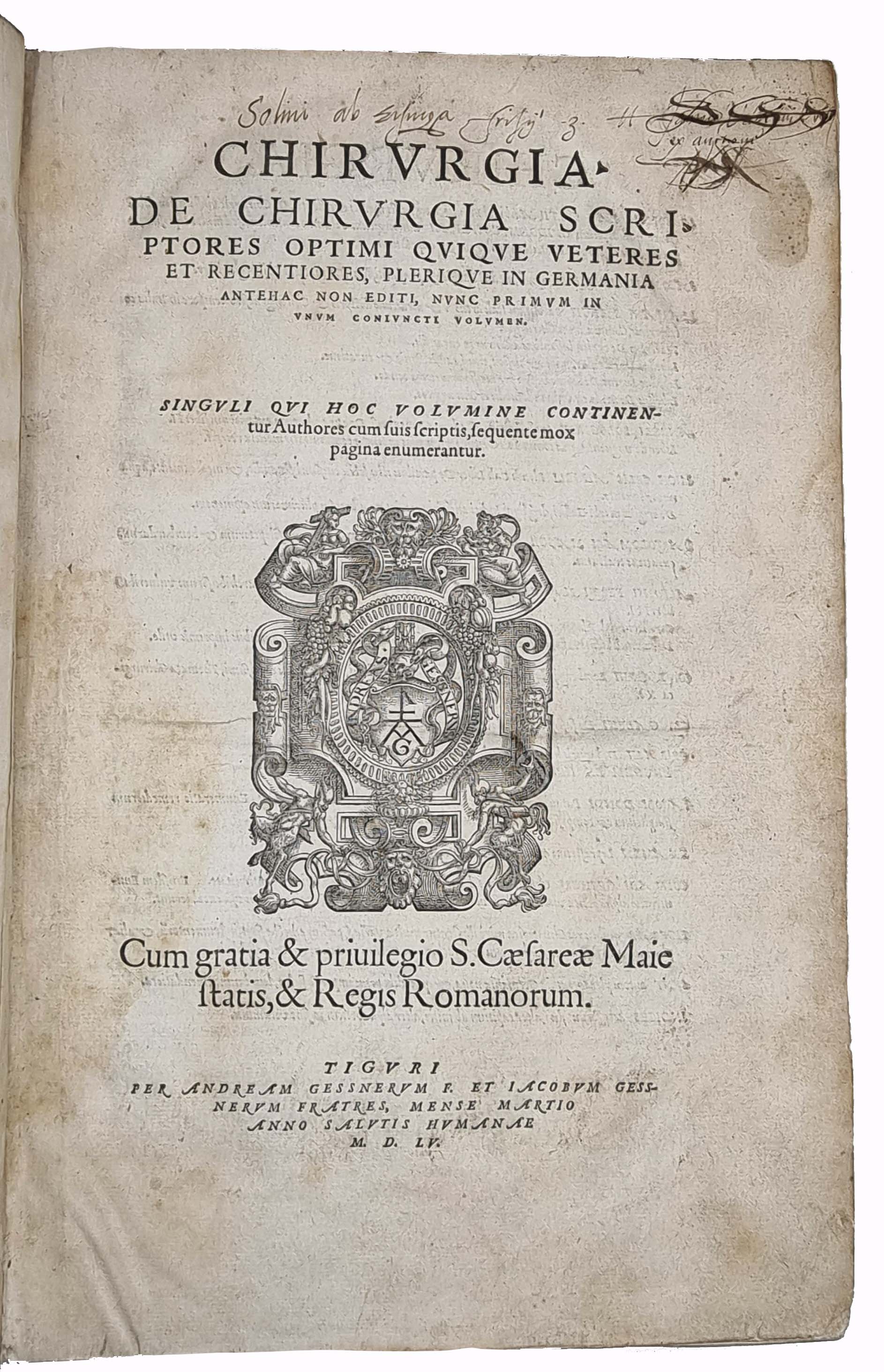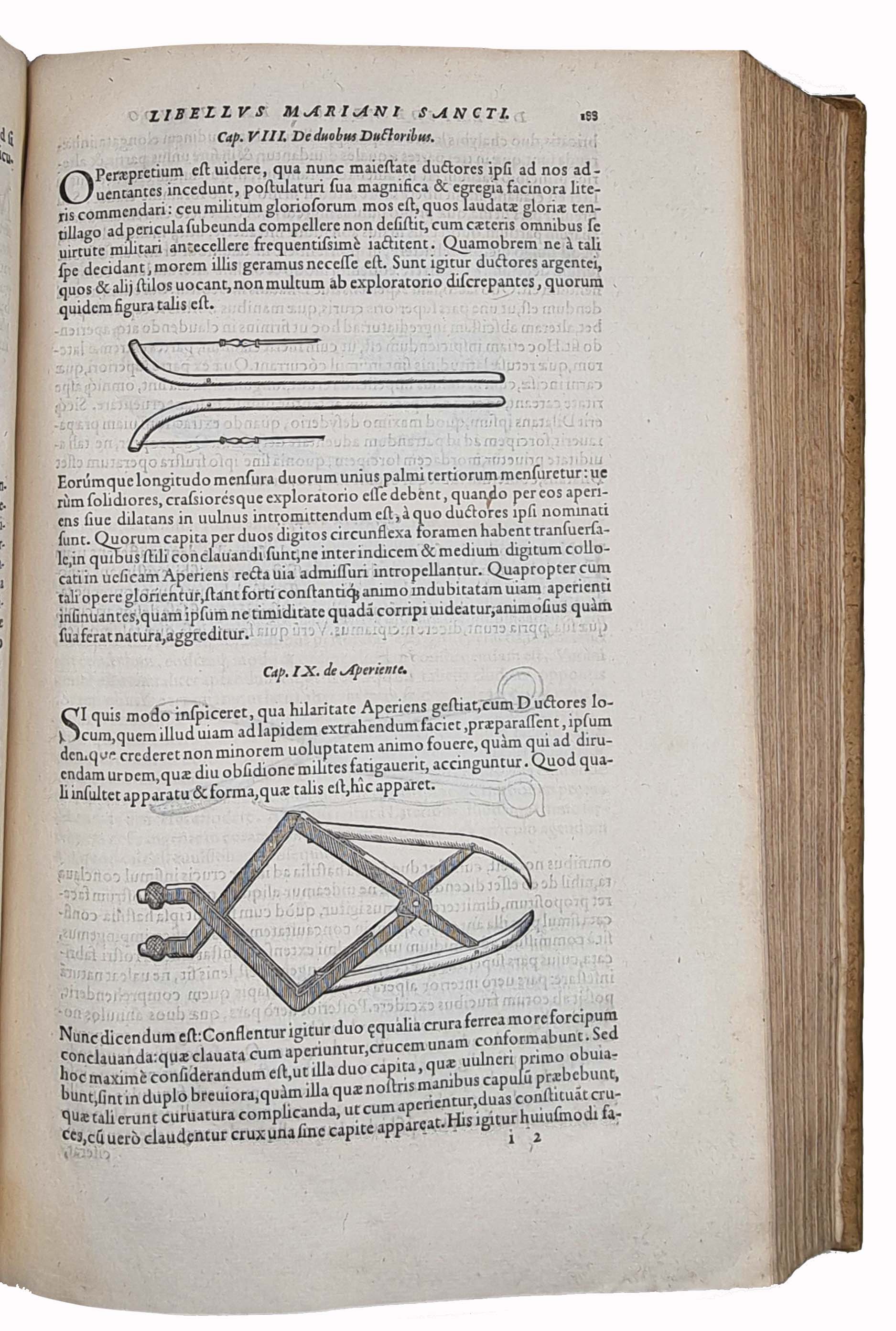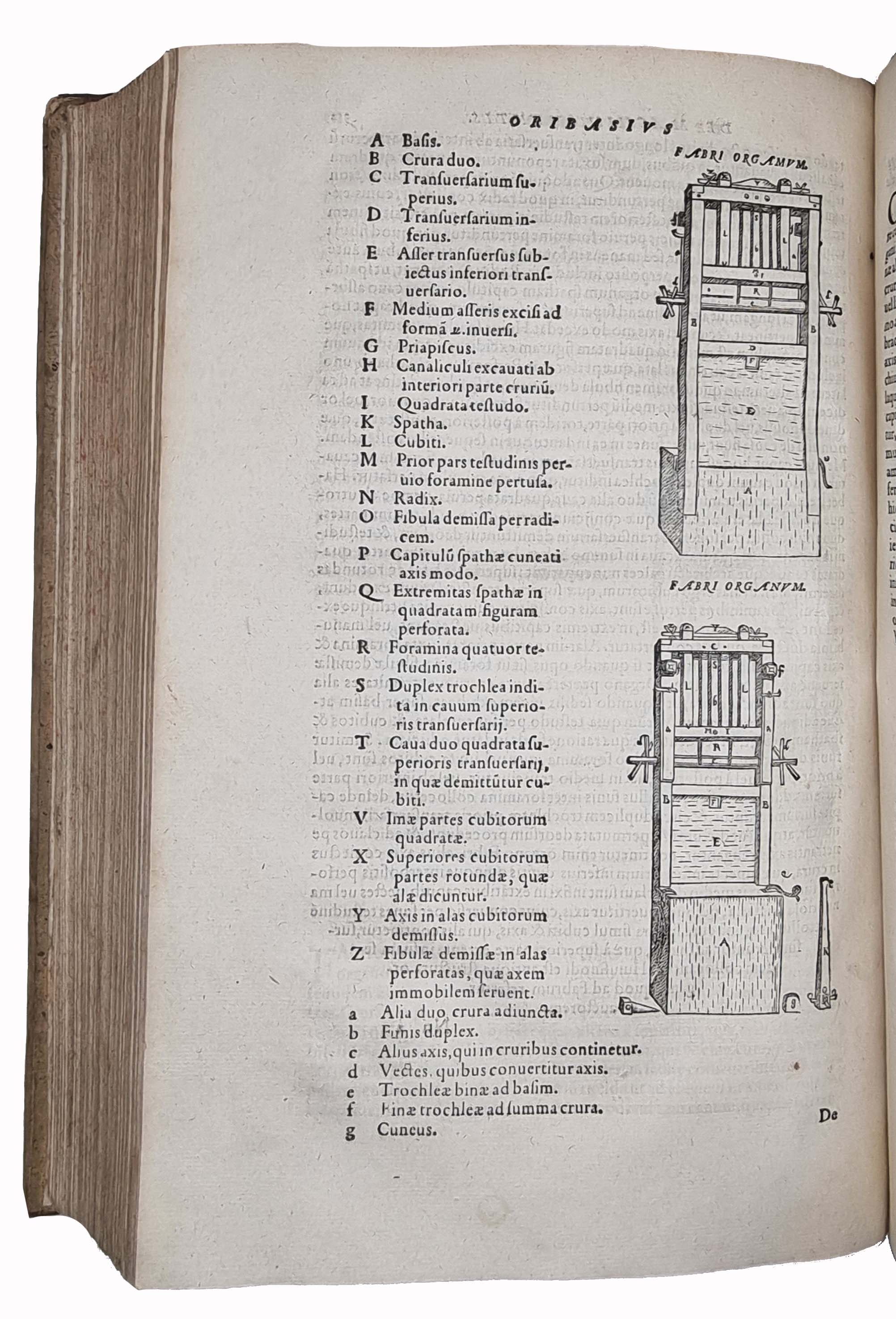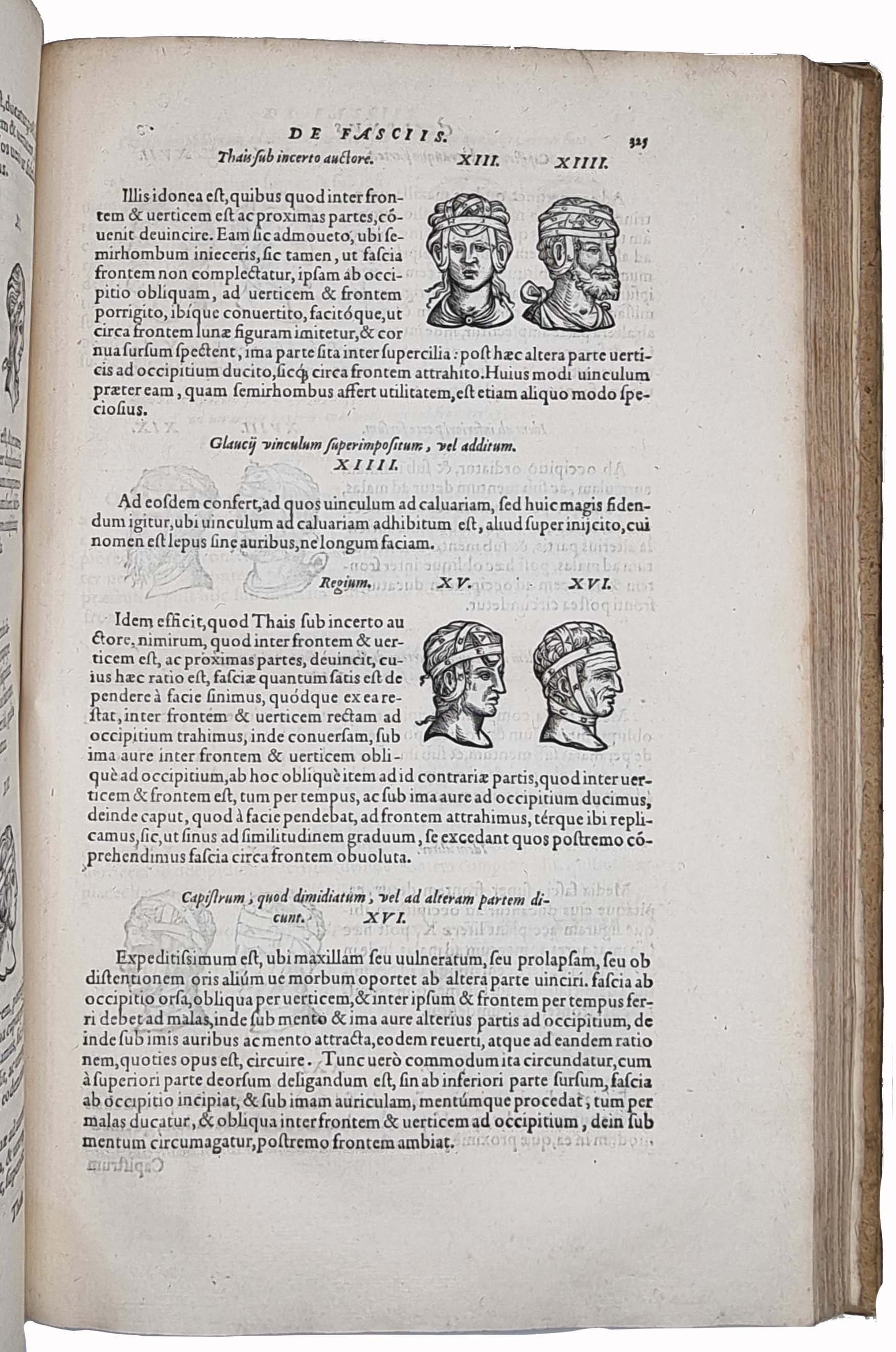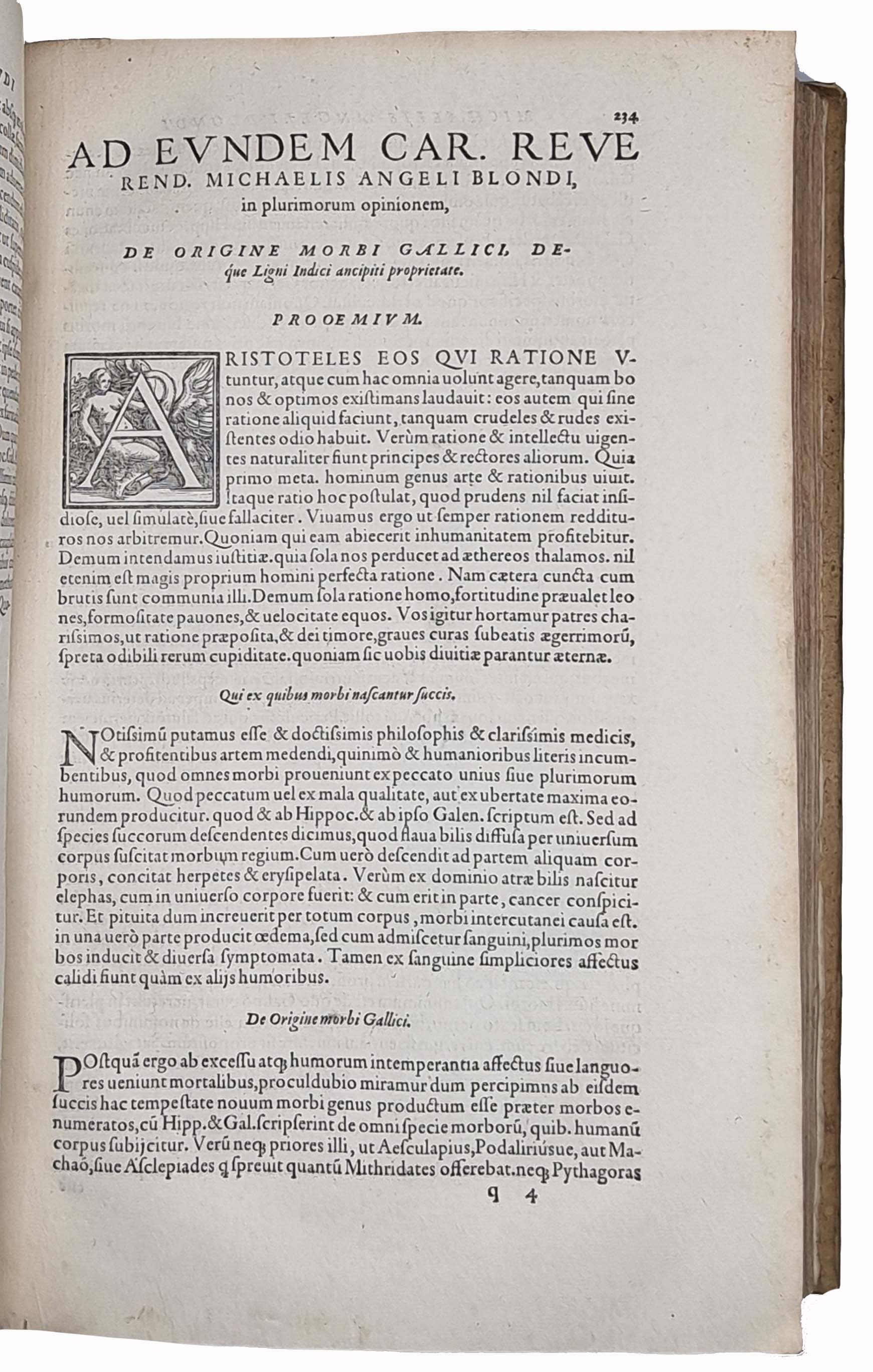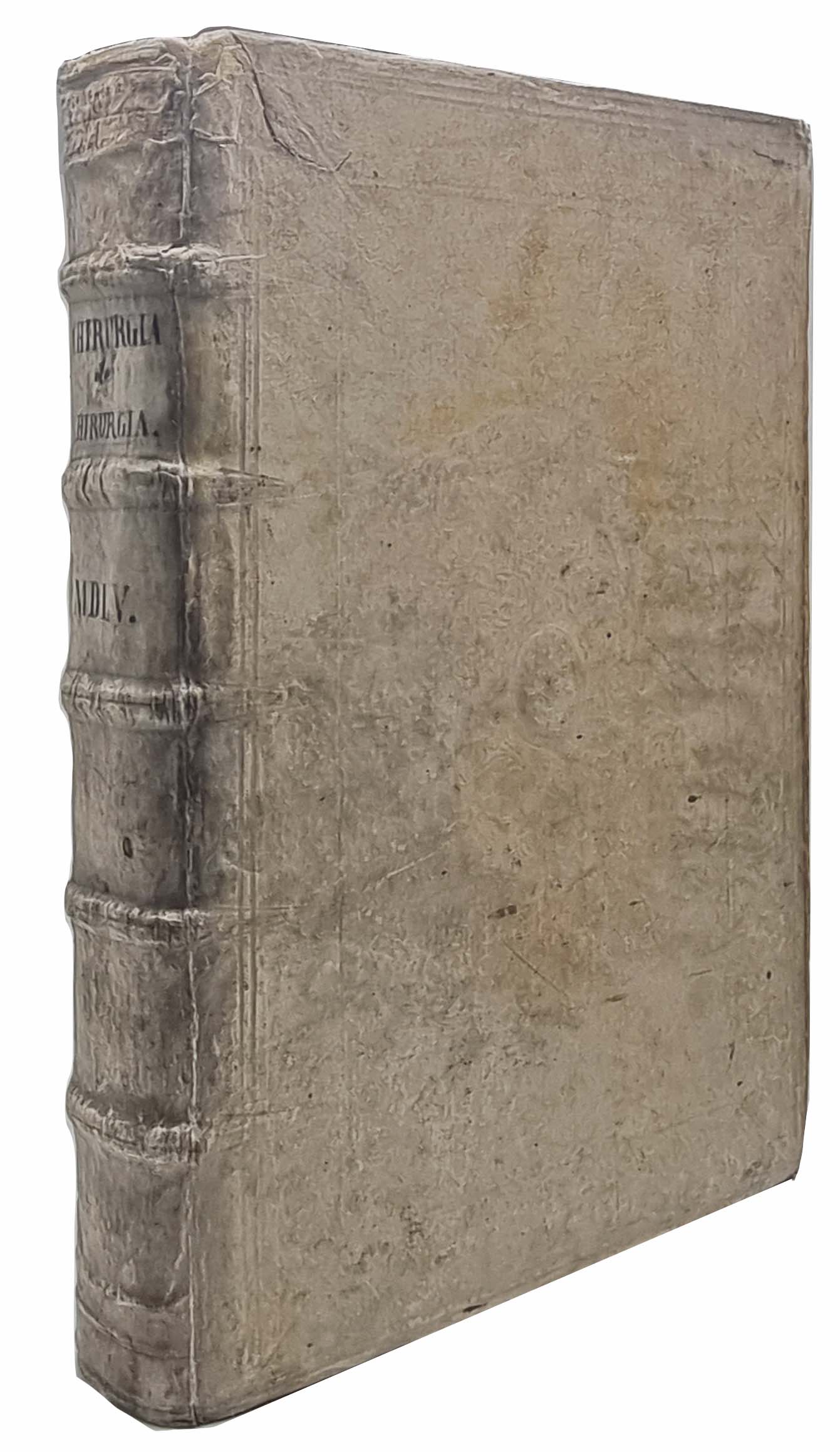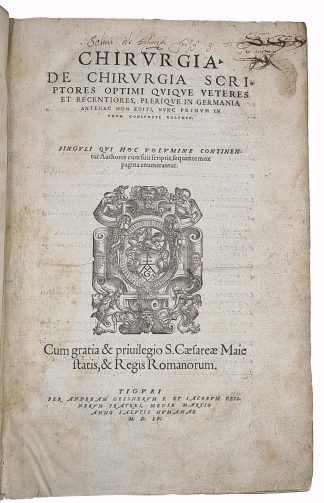GESNER, Conrad. (ed.)
COPIOUSLY ILLUSTRATED SURGERY
Chirurgia. De chirurgia scriptores optimi.
Zurich, Andreas Gessner and Hans Jakob Gessner, 1555£7,500.00
FIRST EDITION. Folio. ff. (x) 408 (xx), [*]4 and last blank. Roman with Italic letter, occasional Greek. Printer’s device to t-p and last, over 150 woodcuts of human figures, medical tools and body parts, decorated initials. Title and last verso (blank) slightly browned and dust-soiled at margins, a little light waterstaining mainly along edges or gutter of first and last few gatherings, occasional light age yellowing, the odd mostly marginal ink spot or thumb mark, gatherings k-m6 dusty at outer blank margin, extreme lower outer blank corner of 2M5 torn off. A good, clean copy in C17 Netherlandish vellum over boards, double and single blind ruled to a panel design, central panel with small blind-stamped fleurons to corners and large blind-stamped lozenge-shaped centrepiece, raised bands, early title inked to spine, old repair to joints and towards upper edge of upper cover, all edges sprinkled red. C19 bookplate of Bibliothèque Daniel Molliere and ‘4 -: -:’ (early price) to front pastedown, C16 ms. ‘Solini ab Eysinga Frisij 3’ and ms. ‘Johannis Valentini(?) ex auctione’ (crossed out) at head of title.
A very good, clean copy of the first edition of this finely illustrated compendium of influential writings on surgery. Conrad Gesner (1516-65) studied natural and medical science at Basle, Montpellier, and Zurich. Renowned for his works on zoology and botany, he practiced as a doctor in Zurich throughout his life. The ‘Chirurgia’ is an epitome of authoritative ancient and more recent texts on surgical techniques and procedures, for practical reference. In the dedication to Francis I and the physicians Geryon Seiler, Jean Tagault and Petrus Cruselius, Gesner explains how he selected these texts from his own library to preserve for posterity the ‘art’ of surgery, which can overcome the limits of medicine and pharmacology by treating health conditions ‘by hand’. The introduction details what makes a good surgeon: a sound knowledge of anatomy, manual dexterity, a solid understanding of what surgery is and its technical terminology, the effects of illnesses and their treatments.
The collected texts by authors like Tagault, Oribasius, Blondus, Bologninus, Hollerius and Galen, encompass surgical procedures for the treatment of tumours, gangrene, abscesses, ulcers, bullet holes, infected wounds and fractures (using the finely illustrated machines with ropes for the correct repositioning of broken bones), as well as techniques for bandage dressing and pain control. There is also a glossary of ‘surgical remedies’ divided by condition, which features boiled cannabis to be placed on infected wounds and ‘gumma arabica’ to speed up the healing of fractures. Among the hundreds of topics discussed are the amputation of septic limbs, the painkiller ‘Balsamum anodynum Guidonis’, arsenic for the treatment of wounds, and the effects of ‘lignum indicum’, a plant with antibacterial properties imported from the Caribbean, used to treat the symptoms of syphilis. The attractive woodcuts reveal the influence of Vesalius’s‘De humani corporis fabrica’ (1543). In the C16, this copy was purchased at auction (‘ex auctione’), as noted in the earlier ex-libris. It was later in the library of Solinus ab Eysingha, from Friesland – probably Juw (1564-1631), a student at Leiden, Geneva, Basle and Heidelberg in the 1570s-80s.
BM STC Ger. p. 357; Graesse II, 134; Wellcome I, 1460; Garrison-Morton 5562; Osler 643; NLM 960; Alden 555/20.

